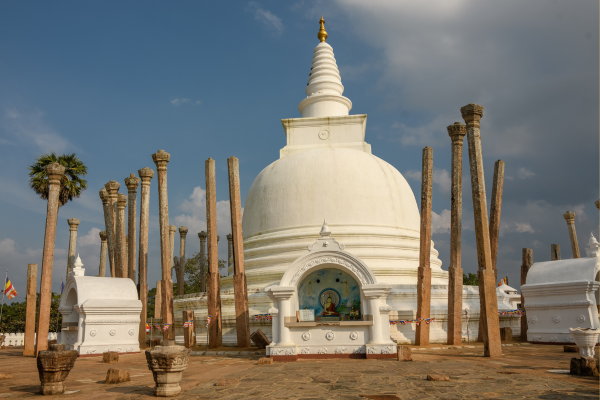The Significance of Stupas in Sri Lankan Buddhism: A Historical and Cultural Perspective – By Nadeeka – eLanka

Stupas are an important part of Sri Lanka’s cultural and religious heritage, and are considered to be some of the most impressive architectural achievements in the country. These ancient structures, also known as dagobas, are Buddhist monuments that are built to enshrine the relics of the Buddha or other important figures in the religion.
One of the most famous stupas in Sri Lanka is the Ruwanwelisaya Stupa, located in the ancient city of Anuradhapura. This stupa was built in the 2nd century BCE by King Dutugemunu, and is believed to enshrine the relics of the Buddha. The stupa stands at a height of 338 feet, and is surrounded by a circular terrace that is adorned with 344 elephants made of stone. The Ruwanwelisaya Stupa is considered to be one of the most sacred sites in Sri Lanka, and attracts thousands of pilgrims and tourists every year.
Another famous stupa in Sri Lanka is the Jetavanaramaya Stupa, also located in Anuradhapura. This stupa was built by King Mahasena in the 3rd century CE, and is the largest stupa in Sri Lanka, standing at a height of 370 feet. It is said to contain a part of the sash (waistband) of the Buddha. The Jetavanaramaya Stupa is also an important pilgrimage site for Buddhists, and is known for its impressive size and intricate design.
The Thuparamaya Stupa, also located in Anuradhapura, is another important Buddhist monument in Sri Lanka. This stupa is believed to enshrine the collarbone of the Buddha, and is one of the oldest stupas in Sri Lanka, dating back to the 3rd century.
The interior of a stupa can vary depending on the specific stupa and its purpose. Generally, the main purpose of a stupa is to enshrine a sacred relic or object related to Buddhism, such as the ashes, bone fragments, or personal belongings of the Buddha or other important figures in the religion.
The central part of a stupa, known as the “dhatu garbha” or “womb chamber,” is where the relic or object is usually housed. This chamber is typically located at the core of the stupa, and can only be accessed by certain designated individuals, such as Buddhist monks.
In addition to the dhatu garbha, some stupas may also have other chambers or levels. These can include meditation rooms, offering rooms, and even living quarters for Buddhist monks.
The exterior of a stupa is also an important aspect of its design and symbolism. Stupas are typically shaped like a dome or hemisphere, with a pointed top, and may be decorated with elaborate carvings, paintings, and other embellishments. These decorative elements can often have religious or cultural significance, and can convey important messages or teachings related to Buddhism.







